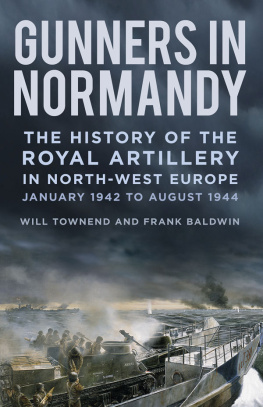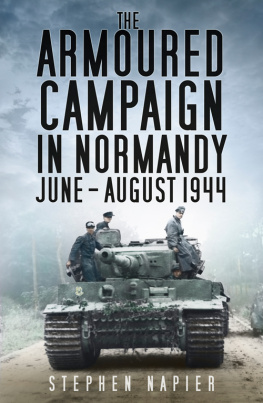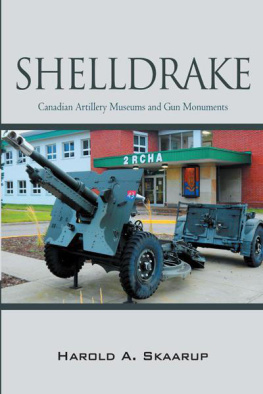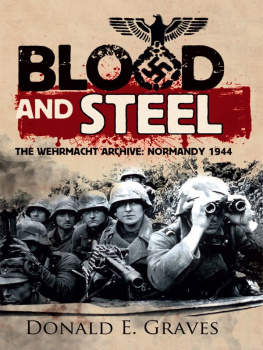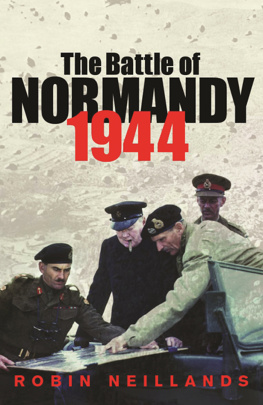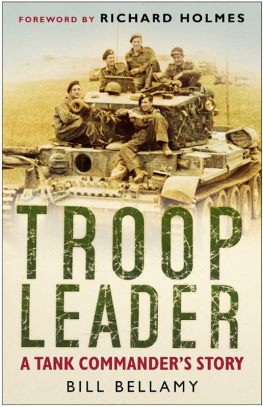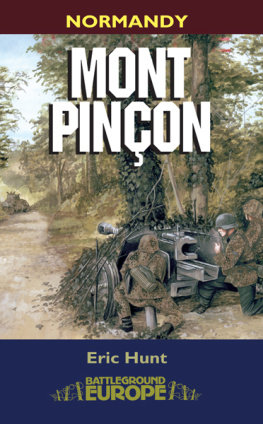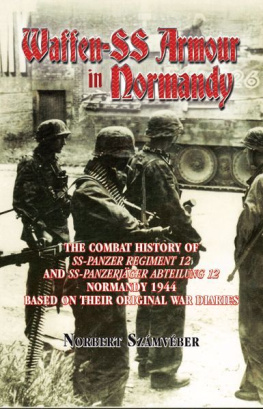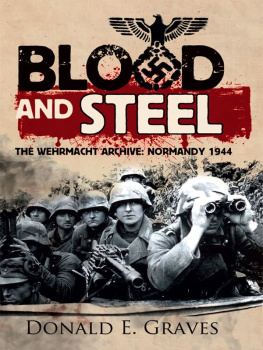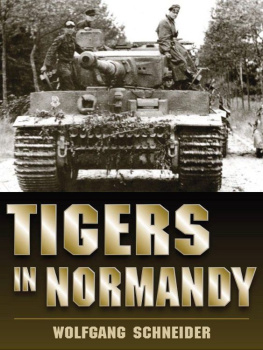GUNNERS IN NORMANDY
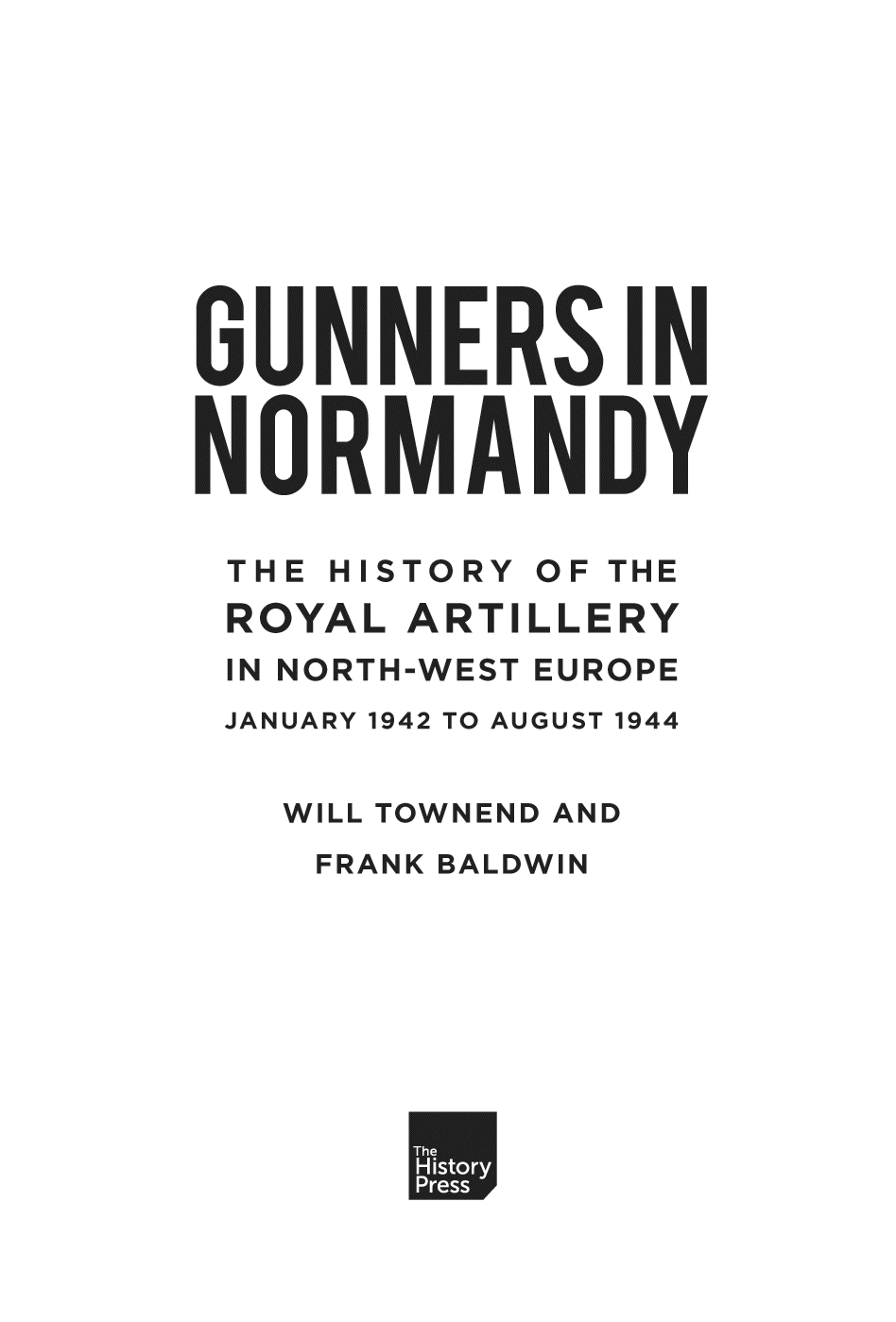
Front Cover: The 9th (Irish) Battery firing the run-in shoot by David Rowlands.
Back Cover: T.L. Plewman and Bdr O. Seman, 53rd Heavy Regiment, RA, July 1944 (IWM TR 2059); Bofors SP Gun, 393rd Light AA Battery, Le Hamel, 17 June 1944 (IMW B 5676).
First published 2020
The History Press
97 St Georges Place, Cheltenham,
Gloucestershire, GL50 3QB
www.thehistorypress.co.uk
Will Townend and Frank Baldwin, 2020
The right of Will Townend and Frank Baldwin to be identified as the Authors of this work has been asserted in accordance with the Copyright, Designs and Patents Act 1988.
All rights reserved. No part of this book may be reprinted or reproduced or utilised in any form or by any electronic, mechanical or other means, now known or hereafter invented, including photocopying and recording, or in any information storage or retrieval system, without the permission in writing from the Publishers.
British Library Cataloguing in Publication Data.
A catalogue record for this book is available from the British Library.
ISBN 978 0 7509 9179 7
Origination by The History Press
Typesetting by Ellipsis Digital Scot Ltd
Printed in Turkey by Imak
Contents
List of Images and Extracts
Foreword
Having just promulgated the first Royal Artillery Heritage Strategy, which highlights the fact that Gunner Heritage is the value the Royal Regiment of Artillery gains from its past now and in the future, the importance of capturing significant events from our history has been reinforced yet again. And this is particularly relevant because, true to our battle honour of Ubique Everywhere, Gunners have served in every campaign, so our fundamental contribution to these events can be lost in the background of the actions of the infantry battalions and armoured regiments. As the authors argue in this book, while there is a general acceptance that firepower was decisive in the Normandy campaign of 1944, it could be said that the Gunner contribution, if not overlooked, has perhaps been taken for granted.
Our Heritage Strategy states that the benefits of articulating our heritage include: enhancing professional effectiveness; fostering identity and esprit de corps; attracting recruits; building support from families; acting as a conduit for engagement with veterans; and sustaining public and wider military support. The Gunner story in Normandy certainly holds lessons for the modern Regiment. The Normandy campaign is studied in the classroom and on the ground, and there are role models at all levels. We are also still fortunate to have a small number of individuals with us who served in our units and whose personal knowledge brings the words on the pages to life.
This book is therefore a welcome addition to the Blue Book series of histories of the Royal Regiment started by General Sir Martin Farndale in the 1990s. Lieutenant Colonel Will Townend, a man who was project officer for the Firepower, Museum Secretary of our Historical Society and had a passion for the Regiments history, undertook the initial work and writing but sadly died in 2010 before he could complete it. His co-author, Frank Baldwin, who served in the Regiment in the 1980s, agreed to finish what Will started; while it is not easy to pick up someone elses creation, he has more than done justice to Wills research.
I am therefore delighted to commend Franks work to you. It is a most important aspect of the story of the Royal Regiment of Artillery. But it also has a personal significance for me. My father, who landed on Sword Beach on D-Day morning, was a forward observation officer in 9 Irish Battery within 7th Field Regiment; as is mentioned in the book, he was badly wounded that evening. Like many others, he never complained about the constant pain that he lived with until his death in 2010. I am very proud of him and all those who served alongside him. This is their story.
Lieutenant-General Sir Andrew Richard Gregory, KBE, CB
Master Gunner, St Jamess Park
2019
Preface
The story of the Gunners on D-Day is not well reported or understood and deserves to be better known.
Lt Col W.A.H. Townend: Letter to
Britain at War magazine, 2009
The purpose of this book is to tell the story of the Royal Artillery in the Normandy campaign. There has not been a book on this subject since the end of the Second World War, when the Royal Artillery (RA) Memorial Book included chapters on the operation.
There are three main reasons why this book is needed now. First, our understanding of the Second World War has developed over the past decades. The story of the Gunner contribution to the Normandy campaign will add something to the mature view of that campaign, as part of the discipline of military history. Second, the modern regiment deserves to have a proper record of the Gunner contribution to the Normandy campaign. The deeds and contribution of the Gunners in Normandy should be an inspiration and role model for the modern regiment. Third, there is an obligation to the wider gunner family; the relatives of those who served in the Second World War. These far outnumber the serving regiment. One bond between the serving and wider gunner family is the common commitment that we make with every act of remembrance. We promise that We will remember them. But to remember we need to understand what these men did and why.
This book has its genesis in the work of the late Lieutenant Colonel Will Townend on the Gunners on D-Day. He lectured on this topic and was an active battlefield guide for school and military groups travelling to the Normandy beaches and landing zones. This was expanded as an opportunity to fill one of the gaps in the Blue Book regimental history series started by Sir Martin Farndale in the 1990s. Sadly, he died in 2010 before the work could be completed. By the time of his death, Will had planned the chapters and written drafts for the middle twelve chapters, which broadly covered the historic narrative from D-Day to the closing of the Falaise Pocket.
With the approval of Helen Townend, I was asked to complete the work. This involved checking and editing Wills drafts, writing the chapters that Will had not started, as well as assembling the maps and illustrations. In addition, the scope was increased to cover Home Forces from mid-1941, when Farndales Years of Defeat ends. The completed work retains Wills chapter structure and as far as possible his words. I knew Will for many years and we shared views on the historic role of the Gunners in Normandy. I hope the work does justice to his intentions.
One of the reasons that it is necessary to write a Gunner version of the Normandy campaign is to correct some of the distortions that have emerged as the history of the Normandy campaign has evolved.
It is widely recognised that while Allied firepower was the key to success, the ubiquity of the Gunners has resulted in their story being taken for granted. Their contribution is anonymous, if not invisible.
The Royal Artillery is largely absent from popular media portrayals of D-Day and Normandy. Two Hollywood feature films and a TV mini-series have been made about D-Day. However, there is no individual gunner of any Allied nationality portrayed in The Longest Day, Saving Private Ryan or Band of Brothers. Popular computer games set in the Normandy campaign almost invariably set the player as an infantryman of some sort.
The dominant images from the newsreels are of air power and tanks, the iconic weapons of the Second World War. Artillery is more associated with the First World War. There are few, if any, publicly available images of many key Gunner activities or equipment. There are more photographs of the interior of Bletchley Park than of heavy AA guns, anti-aircraft early warning or gun-laying radars in Normandy. Nor are there photographs of sound-ranging units or surveyors at work. There are few photographs of Crusader SP 20mm AA guns or gun tractors, and none of several types of radar in use in 1944. Field artillery command posts, artillery signallers, observers and artillery commanders rarely caught the photographers eye.
Next page
